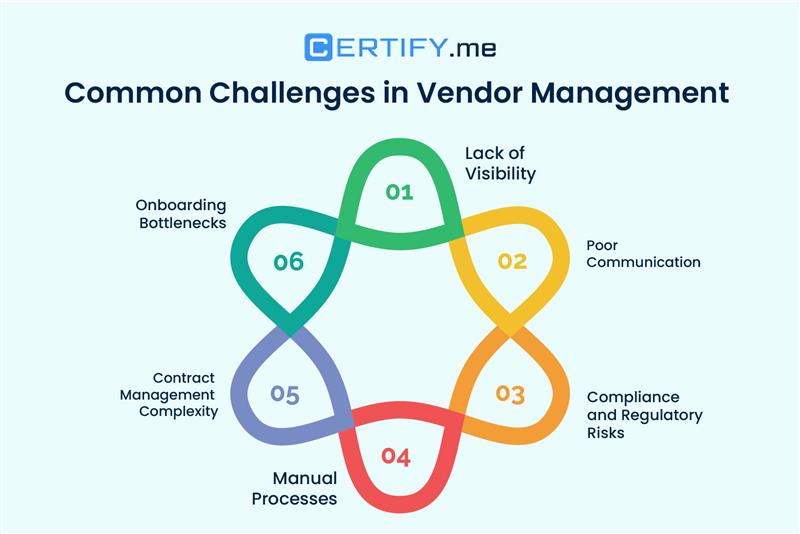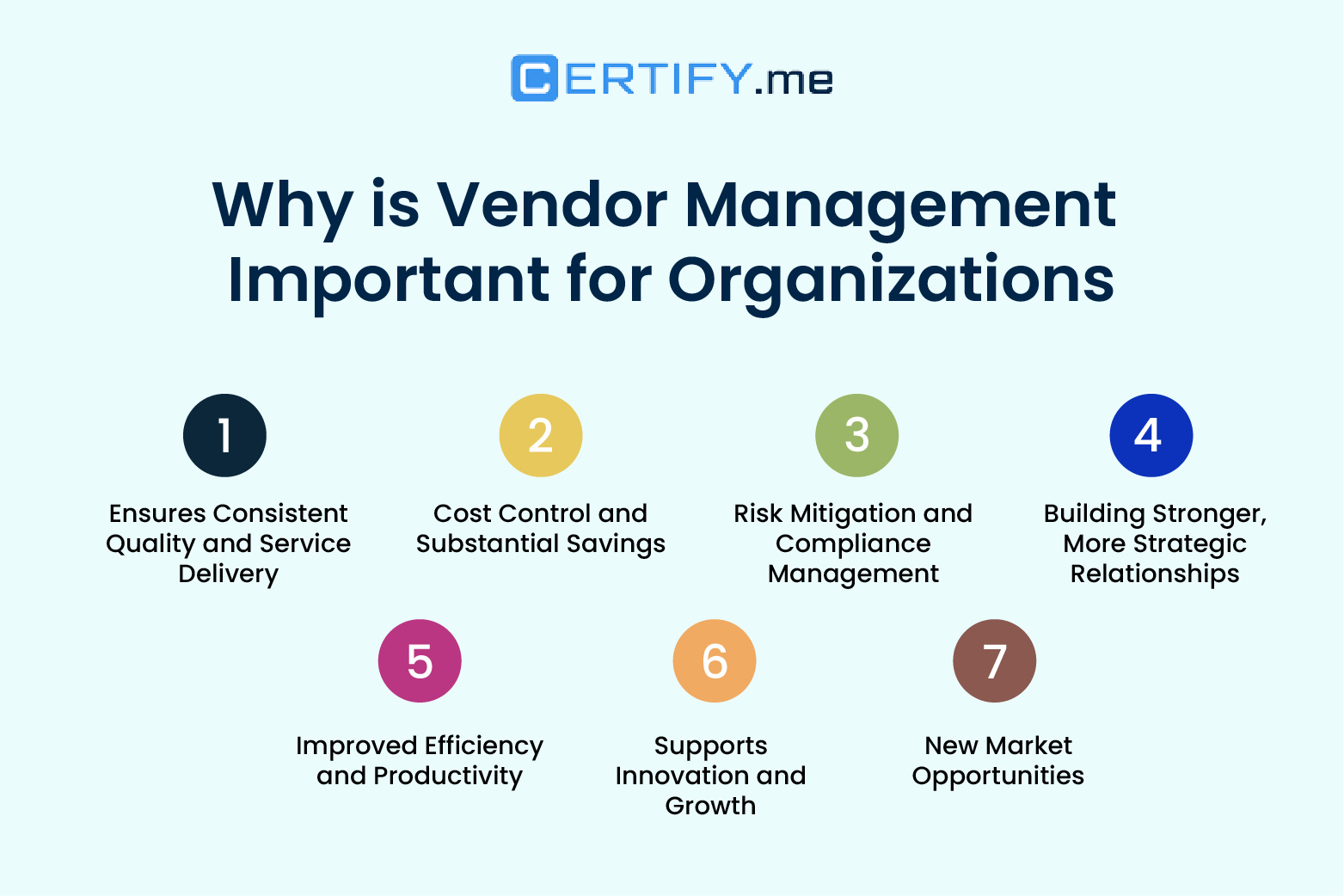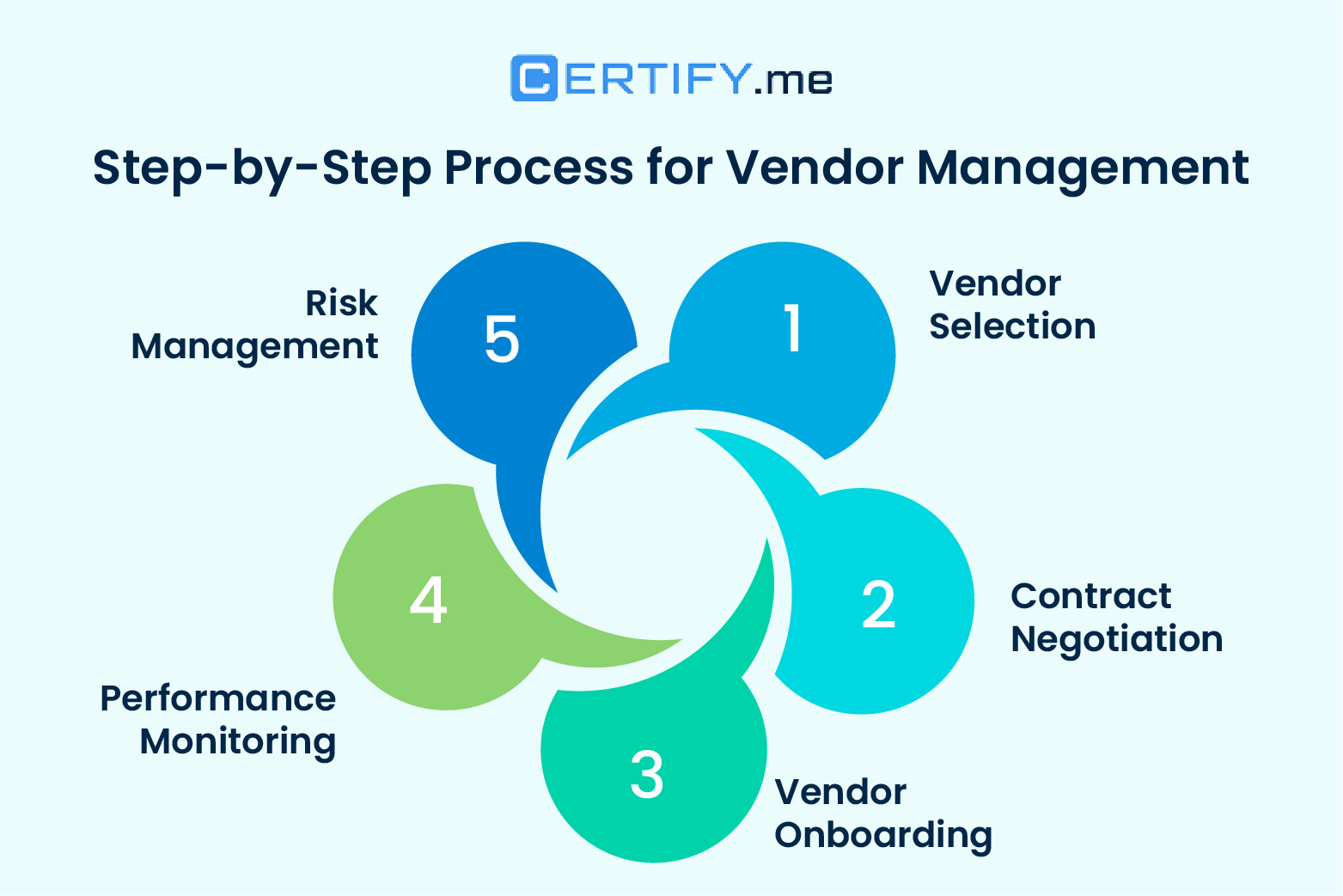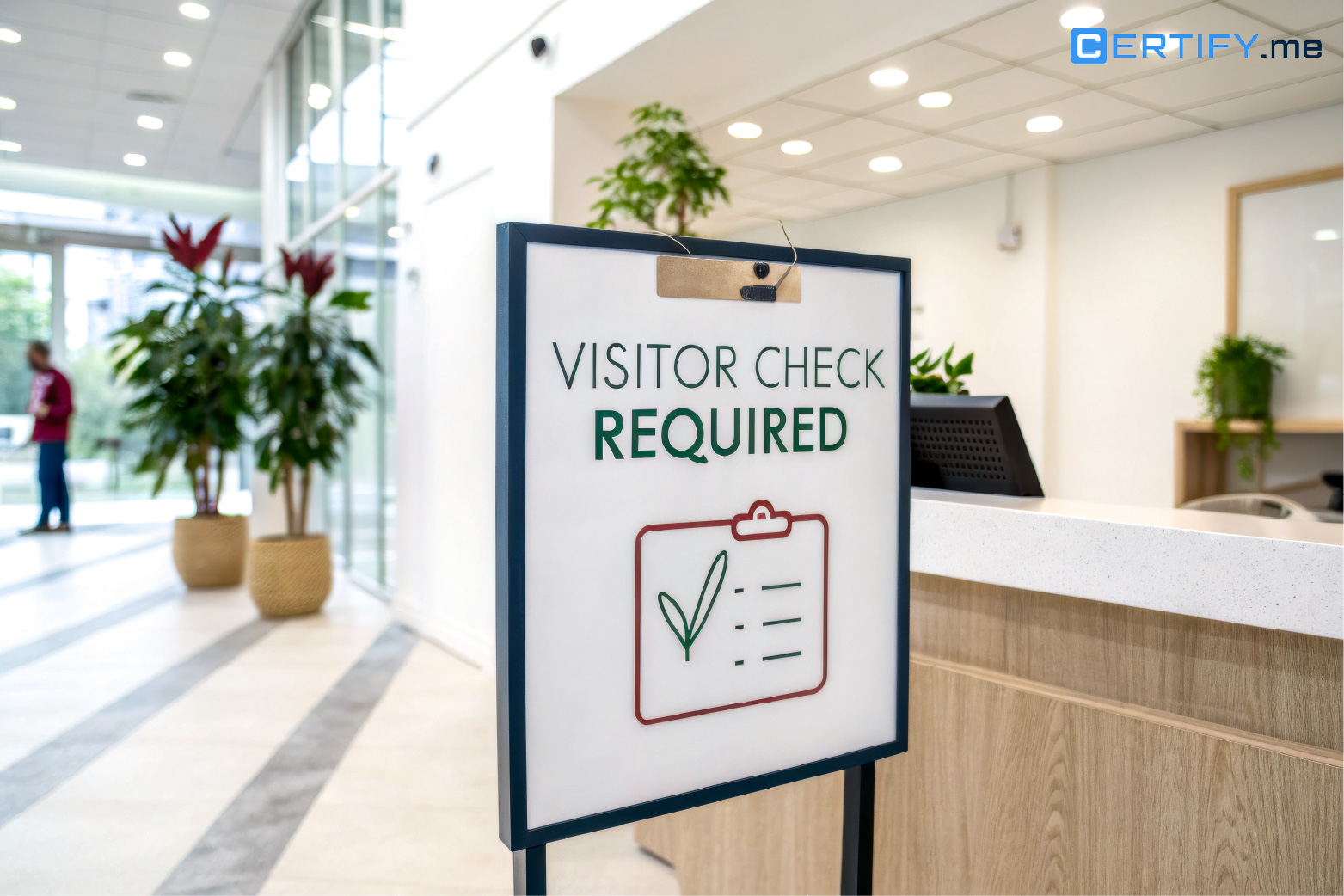Imagine this: Your run a business and have tied up with vendors for raw materials, but every time you see that vendor delays your order or delivery material that is of low quality. What happens next? Your entire operation suffers—production grinds to a halt, deadlines slip, and frustrated customers or clients lose confidence in your business.
Without clear agreements, open communication, and performance tracking, vendor management becomes an impossible task.
Yet, this scenario plays out in countless organizations every day. That’s why vendor management has become a strategic imperative rather than just an administrative function.
You have two ways to manage your vendors: Traditional and Digital.
While traditional vendor management has prevailed for ages, it is highly unreliable since you manage everything via emails, calls, and papers, which is time-consuming and unhealthy for your vendor relationships. Why? No centralized tracking system, slow process, too much back-and-forth, and high cost.
On the other hand, we have digital vendor management, which uses cloud-based software to manage all vendors, suppliers, or contractors. It provides a centralized system, enhanced communication, and quick control over all vendors.
Today, organizations in healthcare, EdTech, manufacturing, real estate, etc., are all looking towards digital vendor management systems.
In this blog, we have covered everything you need to know about – What is vendor management. Keep reading.
What is Vendor Management?
Vendor Management Definition: Vendor management is the strategic process of selecting, negotiating with, and overseeing external partners—like vendors or suppliers—to control costs, reduce risks, ensure quality, and drive business performance.
It turns external providers into valuable assets through smart selection, contract management, and performance monitoring.
Wait—are your vendors silently draining your profits?
Vendor management isn’t just paperwork and polite emails. It’s the strategic system that helps you choose the right partners, negotiate contracts that protect your interests, monitor performance closely, and manage risks before they turn into disasters.
Think effective vendor management as the art and science of transforming external suppliers into your business’s secret weapon.
Done right; it not only improves performance but exceeds it. It helps you control costs, reduce risks, and even spark new ideas that drive innovation.
From IT service providers and raw material suppliers to cleaning crews and marketing consultants, smart vendor selection and ongoing performance monitoring, touch every corner of your business. Let’s understand a bit about vendor management terminologies:
Vendors vs Suppliers
The two terms that are used interchangeably are “suppliers” and “vendors.” While most think it’s the same, in reality, there’s a slight difference between the two that are worth understanding.
Who would be a vendor?
Vendor Definition: A vendor is a business or individual that sells finished products or services directly to another business or end users.
Examples:
- An office supplies company
- A software provider
- A cleaning services agency
Think of office supplies vendors or software vendors – they offer ready-to-use products or services. They form a final link before the end users. Selling finished goods or services directly to business or consumers.
What do you mean by suppliers?
Supplier Definition: A supplier provides raw materials, components, or inputs that a company uses to produce its final products or services.
Examples: A fabric producer supplying textiles to a clothing brand.
On the other hand, suppliers offer raw material, components, or inputs that are used to make a final product or services by the company. They’re typically earlier in the supply chain. Example – a steel supplier providing materials for manufacturing would be considered a supplier rather than a vendor.
In practical, though, these terms are often used interchangeably in vendor management contexts, and the same management principles apply to both.
Common Challenges in Vendor Management

TL; DR:
What are the challenges in vendor management?
Organizations often face roadblocks when managing vendors, these bottlenecks are:
Lack of Visibility and Control: Poor tracking of vendor performance and spending leads to wasted budgets and unmanaged risk.
Communication Breakdowns: Vague expectations, inconsistent updates, and poor tools result in delays, errors, and mistrust.
Compliance and Regulatory Complexity: Keeping up with evolving regulations and ensuring vendor compliance is tough but non-negotiable.
Manual Process Inefficiencies: Spreadsheets and emails slow everything down, causing bottlenecks and increased errors.
Contract Management Overload: Multiple contracts with varying terms are hard to track manually, leading to missed renewals and lost savings.
Onboarding Delays: Slow or inconsistent onboarding stalls projects, frustrates vendors, and disrupts timelines.
Even with the best intentions, organizations face predictable challenges in vendor management. Let’s understand these challenges first.
Lack of Visibility and Control
Companies fall short when it comes to maintaining a clear visibility into vendor performance or they just do not measure it properly. If you cannot track where your cash is going, you might end up spending a lot on vendors who never really deliver.
This problem is common due to the lack of insight into the current vendor activities, contracts, and performance metrics.
Lacking spend visibility means that you will not be able to identify where your money is wasted, negotiate firmer terms, or catch your issues to risks. At the end of the day, you miss the opportunity to cut costs and unknowingly expose your business to significant risks.
Communication Breakdowns
Wonder why your vendor relationships feel like a constant headache? Look at your communication.
The main cause of project delays, misunderstandings, and overall frustration is poor communication.
It happens when:
Expectations are vague, updates are inconsistent, and nobody knows what’s really going on.
- No clear instructions? You will get delays and errors.
- Limited visibility into progress? Mistrust creeps in fast.
- Using the wrong channels or clunky tools? Good luck keeping everyone aligned.
When you don’t set clear expectations or share regular feedback, vendor performance takes a nosedive—and so does your timeline.
Compliance and Regulatory Complexity
Struggling to keep vendors compliant? You’re not the only one.
Ensuring every vendor follows legal, industry, and contractual rules can feel daunting, especially as regulations constantly evolve. The challenge only grows as you add more vendors and operate across different regions.
But compliance isn’t optional. If you don’t follow the rules, you risk severe penalties and immediate harm to your reputation.
Security is just as important. You have to protect your vendors’ sensitive data with strong security measures and clear privacy policies to stay fully compliant and safeguard your business.
Manual Process Inefficiencies
Are you still attempting to handle vendors using spreadsheets and never-ending email conversations? That will lead to chaos.
Manual processes result in bottlenecks that raise the risk of costly mistakes.
As your vendor network expands, those spreadsheets become a nightmare. Lack of real-time insight. Collaboration is not easy. Only further mistakes, postponements, and adherence complications are on the horizon.
There’s better out there for your business—and for your vendors, too.
Contract Management Overwhelm
These varied types of contracts with different terms, deadlines, and obligations are difficult to manage manually-and that’s an understatement.
The situation worsens once you have to deal with multiple vendor relations at the same time: vendors renewals are missed and there are numerous opportunities to optimize agreements that go unnoticed.
Therefore, contract-management must be well engineered for successful companies to thrive. CERTIFY.me vendor-management software helps you efficiently keep a track of every vendor contract, manage deadlines, and put more savings on every partnership.
Onboarding Bottlenecks
When onboarding stretches for more than a week or even months, serious projects get delayed, timelines slip, and productivity gets hit.
Internal teams are left sitting on their hands waiting for crucial services or materials while vendors grow annoyed with unclear expectations and an endless back-and-forth.
The longer it takes, the more strained relationships get and the more money is thrown away, distracting you from results.
The flurry of inconsistent onboarding is not something nice to have; perfectly streamlined scheduling is essential to keep work flowing and partnerships working.
Why Vendor Management is Crucial for Organizations

TL; DR:
Why Vendor Management Matters?
Most industries today depend heavily on external vendors; poor management can lead to production delays, compliance issues, and financial or legal trouble.
- Avoid delays, compliance issues, and overspending.
- Ensure consistent quality and reliable service delivery.
- Gain cost control through better contracts and insights.
- Reduce legal and operational risks.
- Strengthen vendor relationships and collaboration.
- Boost efficiency, productivity, and speed.
- Tap into vendor innovation and expertise.
- Unlock access to new markets faster.
Let’s be real about the importance of vendor management.
Industries these days, be it healthcare, education, real estate, e-commerce, etc., rely highly on external suppliers for products or services.
Ignoring it can result in production halts, vendor compliance violations, and late delivery, among other chaos. The impact goes beyond cost; it can put you into legal trouble.
Ensures Consistent Quality and Service Delivery
Think: clear quality standards, service level agreements (SLAs), and performance metrics – it is the recipe for effective vendor management.
Businesses who follow these key strategies can manage vendors easily, get the best out of them, and ensure high-quality and service delivery consistently.
Benefits? Improved operational efficiency, improved customer satisfaction, and also, you get the competitive edge.
Cost Control and Substantial Savings
Without effective vendor management, you’re overspending on underperforming vendors. You can’t track performance, monitor risks, or see where your money is going. Administrative costs keep rising, goals slip out of reach, and customer trust erodes—hurting your bottom line.
But with effective vendor management, you gain spend visibility and clear insights into vendor performance. Now you’re ready for the role of negotiation—armed with data to secure better rates and stronger terms.
And with contract optimization, you lock in the best value through favorable payment terms, solid service level agreements, and clauses that protect your interests.
Risk Mitigation and Compliance Management
Risk mitigation and compliance fall apart when you don’t manage vendors properly.
Imagine this: your vendors are operating without complying with industry-set standards, which ultimately results in hefty fines and legal issues for your business.
That’s where vendor risk management comes in. You can monitor vendors’ actions and identify potential risks in advance, including supply chain disruptions, unethical practices, or quality failures. You can handle risk or not let it happen by taking appropriate measures.
Vendor compliance management guarantees that your suppliers follow stringent company guidelines, industry norms, and legal obligations.
Building Stronger, More Strategic Relationships
Picture this: You and your vendors are strategically aligned – you know all about their activities, they understand your business goals, and everyone is on the same page through open communication.
To achieve this, you need to focus on building vendor relationships. That’s exactly what vendor management does for you.
Vendor management systems offer centralized tools and streamline processes, improving collaboration and communication with vendors and resulting in improved vendor relationships.
Improved Efficiency and Productivity
When you don’t have proper vendor management, everything slows down—missed deadlines, endless back-and-forth, and poor coordination that kills productivity.
But with effective vendor management, you put a clear system in place to select the right vendors, set expectations, and track performance in real time.
The result? Processes run smoothly, teams spend less time chasing vendors, and you get faster, more reliable service. In the end, efficiency goes up, costs go down, and everyone can focus on more valuable work.
Supports Innovation and Growth
Is vendor management just about keeping the lights on? Think again.
It’s not only about managing what you already have—it’s about unlocking what your business could become.
When you approach vendor management strategically, you tap into capabilities, technologies, and markets that would cost you a fortune—and years of effort—to build on your own.
Here’s the thing: your vendors are specialists. They have spent years mastering their craft, developing powerful solutions, and learning the market inside out.
Effective vendor management means you don’t have to reinvent the wheel—you get to use the best of what they have built to drive your business forward.
New Market Opportunities
Think vendors are just suppliers? You’re missing the big picture.
Vendor management is not about placing orders and crossing fingers to get the delivery done. It’s how you turn everyday vendor relationships into powerful strategic partnerships that expand your reach, expertise, and customer base.
Here’s how it works:
It starts with strategic vendor selection. You don’t just pick any vendor—you choose partners who already have a strong foothold in the markets you want to enter. They have got the distribution channels, the regulatory know-how, and the customer trust you’d spend years trying to build.
The result? Instant access to new markets—without the massive investment or endless ramp-up time.
Key Benefits of Effective Vendor Management
TL; DR:
What are the benefits of vendor management?
Key benefits of strategic vendor management (beyond cost savings) are:
- Smarter vendor selection based on fit, not just price
- Faster onboarding and quicker time-to-value
- Lower supply chain risk through better planning
- Stronger negotiation leverage with performance data
- Data-driven decisions that outperform guesswork
Beyond cost savings, there are several other vendor management benefits. Let’s explore how strategic vendor management transforms your entire approach to external partnerships.
Enhanced Vendor Selection Process
Do you think that choosing a vendor is only about finding the best price? Think again.
A structured vendor selection process goes way beyond cost. You’ll look at reputation, financial stability, technical skills, and even how well they communicate.
Because the right partner isn’t just affordable—they’re a match for your culture and goals. And that’s what sets you up for long-term success.
Accelerated Onboarding and Time-to-Value
Think vendor onboarding has to drag on for months? It doesn’t.
With standardized processes, you can automate onboarding from start to finish and slash the time between contract signing and productive work.
The payoff? Faster project launches and instant access to the services that keep your business moving forward.
Reduced Supply Chain Risk
Do you believe that you can ignore risk management and hope for the best? That’s a gamble you can’t afford.
Proactive risk management and smart contingency planning help you avoid disruptions that could stall your operations.
By diversifying your vendor base and keeping backup options ready, you build real resilience into your supply chain.
Improved Negotiation Leverage
Think you have zero leverage when it’s time to negotiate contracts? Think again.
Strong vendor relationships and solid performance data put you in control. When vendors value your partnership—and you can back it up with proof of their results—you’re in a powerful position to secure better rates and terms.
Better Decision-Making Through Data
Still relying on gut feelings to manage vendors? That’s risky.
Performance monitoring gives you the clear insights you need to make smart, informed decisions.
Whether you’re renewing contracts, expanding partnerships, or exploring new options, data-driven choices will always beat guesswork.
The Vendor Management Process: Your Step-by-Step Roadmap

TL; DR:
What is the process of vendor management?
The vendor management process involves five key steps:
- Vendor Selection: Identify needs, evaluate potential vendors, and choose the best fit based on quality, reliability, and alignment—not just cost.
- Contract Negotiation: Define clear deliverables, timelines, responsibilities, and legal protections in a formal agreement.
- Vendor Onboarding: Collect documents, integrate systems, set expectations, and establish communication channels.
- Performance Monitoring: Track KPIs like quality, delivery, and compliance regularly, and review vendor performance.
- Risk Management: Continuously assess vendor-related risks and create contingency plans to prevent disruptions.
The vendor management process isn’t a one-size-fits-all solution, but there are core steps that form the foundation of successful vendor management. Let’s walk through each phase.
Vendor Selection
Stop. Before you pick a vendor, ask yourself this:
- What are you really trying to accomplish
- Which requirements are non-negotiable—and which are just nice to have?
Take a moment to clear your priorities. Then, do your homework. And no glossy brochures are counted.
- Dig into their track record.
- Read real customer reviews.
- Check their financial stability.
- Make sure their culture actually fits yours.
Next, don’t settle for just one quote. Send out RFQs or RFPs to multiple vendors. You deserve options. And here’s the kicker: Never pick based on price alone.
Look at the full picture—experience, technical know-how, scalability, and whether you can actually communicate like humans.
Because the right vendor isn’t just a supplier. They are your partners in success.
Contract Negotiation
Ready to negotiate? Good. This is where all that prep work finally pays off.
First things first: Get everything on the table.
- What exactly needs to get done?
- When will it happen
- How will you measure success?
Define the scope, deliverables, timelines, and metrics clearly. No vague promises. And don’t skip the essentials:
- How will you handle confidentiality?
- Who owns the intellectual property
- What happens if things go sideways?
Pro tip: The best negotiations create value for everyone involved.
Look at the total cost of ownership—what this deal will really cost over time. Make sure performance metrics actually support your business goals.
Vendor Onboarding
Heads up: Vendor onboarding isn’t just a checklist. It establishes the tone for all subsequent events.
First, gather the essentials: Licenses, Insurance certificates, Tax forms, Compliance documents, and no shortcuts here.
Next, get them plugged into your systems—payment, procurement, whatever tools you rely on. But don’t stop at paperwork.
- Create clear communication channels.
- Set up go-to contacts on both sides.
And most importantly: Share exactly what you expect. Be open and honest about your processes, deadlines, and success standards. Because when everyone knows the rules from day one, you save yourself endless headaches down the road.
Performance Monitoring
Stop thinking performance monitoring is optional. This is where a lot of organizations drop the ball—and pay for it later.
If you want long-term success, you have to track what matters. Which KPIs should you watch?
- Quality metrics
- Delivery times
- Responsiveness
- Compliance measures
Measure them consistently. And don’t just collect data—do something with it. Hold regular performance reviews. Quarterly for your strategic vendors. Annually for everyone else.
Use these meetings to give honest feedback, solve problems, and spot new ways to improve.
Because strong vendor relationships don’t happen by accident. They are built on clear expectations and accountability.
Risk Management
Think risk management is something you check off once and forget? Think again.
This isn’t a one-time assessment. It’s an ongoing discipline. Watch out on:
- Financial stability
- Regulatory compliance
- Cybersecurity practices
- Operational risks
Don’t wait for a crisis to figure out your next move. Build contingency plans for your critical vendors now. Ask yourself: What happens if a key supplier disappears overnight?
Having backup options isn’t overkill—it’s smart business. Because the real risk isn’t uncertainty. It’s being unprepared when it hits.
Tools and Technology for Digital Vendor Management
Digital vendor management has revolutionized how organizations handle their external relationships. Vendor management systems (VMS) provide centralized platforms that streamline everything from vendor onboarding to performance monitoring.
Vendor Management Systems
Spreadsheets and scattered emails aren’t convenient. If you want control and visibility, you need something more robust. A proper vendor management platform puts everything in one place—data, contracts, communications. No more digging through folders.
The best tools give you:
- Self-service portals allow you to manage vendor information and update vendors’ correct information or documents.
- Automated workflows that clearly show what has to be done, when, and how, reducing manual work.
- Secure document storage so you can store all your vendors’ data in a single place.
- Integrations with your procurement systems for a smooth workflow.
And that’s just the start. Modern solutions also deliver:
- Real-time dashboards to track vendor activities
- Automated solution for compliance tracking
- Analytics that show exactly how your vendors KPIs and performance—you’ll know where your money is going
Because when you can see the full picture, you make smarter decisions.
Key Features to Look For
Don’t just adopt any vendor management software, here’s what you should be looking for when choosing a vendor management software:
Prioritize solutions that offer:
- End-to-end lifecycle management
- Tools for collaboration to keep cross-functional teams in sync
- Flexible reporting you can tailor to your needs
What sets the best platform apart from others? It don’t just automate busy work.
It combines automation with human insight—taking care of routine tasks while giving you the data and tools to make smart, strategic decisions.
Best Practices for Successful Vendor Management
TL; DR:
What are the Best Practices for Vendor Management?
Best Practices for Vendor Management are:
- Start with a clear strategy aligned to business goals and backed by written policies.
- Classify and prioritize vendors based on impact, risk, and complexity.
- Continuously review and improve processes and performance—focus on collaboration, not blame.
- Use technology to automate workflows while keeping the human connection front and center.
- Diversify your vendor base to reduce risk and maintain flexibility.
- Invest in relationships—trust and open communication drive long-term value.
Vendor management best practices separate successful organizations from those struggling with vendor relationships. These proven strategies help you maximize value while minimizing risk.
Develop a Clear, Strategic Approach
Don’t jump in without a plan.
Begin by developing a vendor management plan that truly supports your company’s objectives.
Set clear, measurable objectives. What does success look like? How will you track it? Make sure your metrics connect vendor performance directly to your bottom line.
Next, put it all in writing. Create formal policies that spell out roles, responsibilities, and processes. This isn’t just paperwork. It’s what keeps everyone on the same page, ensures consistency across teams, and holds people accountable when it matters most.
Because a solid strategy isn’t optional. It’s the foundation for everything you build on top.
Classify and Prioritize Your Vendors
Not all vendors are created equal. Some are mission-critical. Others are just nice to have.
Your first step? Figure out who’s who. Identify your strategic suppliers—the ones your operations can’t run without or those bringing serious value to your business. Then, act accordingly.
Don’t treat every vendor the same. Develop different management approaches based on:
- Importance to your business
- Level of risk
- Relationship complexity
Because smart vendor management isn’t one-size-fits-all, its about prioritizing vendors who matter the most.
Embrace Continuous Improvement
Successful vendor management isn’t set-it-and-forget-it. It takes constant refinement. Make it a habit to review everything—your processes, KPIs, and vendor performance.
Ask yourself:
- What’s working well?
- Where are the gaps?
- How can you improve results for everyone involved?
And here’s the mindset shift:
Use performance data to drive improvement, not just to point fingers. Because the strongest vendor relationships don’t thrive on blame. They are made based on collaboration, teamwork, and problem solving together.
Leverage Technology Strategically
Automate all the boring stuff—but don’t forget the people behind it.
Use vendor management systems to streamline the busywork and keep things running like clockwork. But here’s the thing: technology is here to enhance relationships, not replace them.
Because at the end of the day, it’s the trust and connection you build with your vendors that sets you apart. Let tech handle the routine—so your front-desk can focus on the human side that really drives results.
Diversify Your Vendor Base
Don’t get too comfortable with just one vendor. Relying on a single supplier for critical functions can backfire fast.
Diversify your vendor base. It’s the simplest way to cut risk and keep your negotiating power strong. And even if you love your primary suppliers, don’t let your backup options fade away.
Stay connected with alternate vendors. Because when something goes wrong—and eventually, it will—you’ll be glad you planned ahead.
Focus on Relationship Building
Remember this: Behind every contract and invoice, there are real people. If you want lasting success, invest in the relationship, not just the transaction.
Build trust. Keep communication open. Focus on creating value for both sides. When vendors know you’re committed to partnership, good things happen.
You wouldn’t get collaborative ideas anywhere else. Because strong relationships aren’t just nice to have. They are your competitive edge.
Conclusion
What is vendor management? It is no longer some boring back-office chore—it’s your secret weapon. Vendor management is a strategic process that not only saves money but slashes risks, compliance issues, and sparks innovations. Successful vendor management build partnerships that actually move the needle.
Here’s the truth: treating vendor management as an afterthought is what holds businesses back.
Businesses who invest in smarter systems like digital vendor management solutions, nurture strong relationships, and track performance like it matters. And they lead the market—and unlock possibilities the competition can’t even see. Book a Demo Today to leverage the best vendor management solution.











